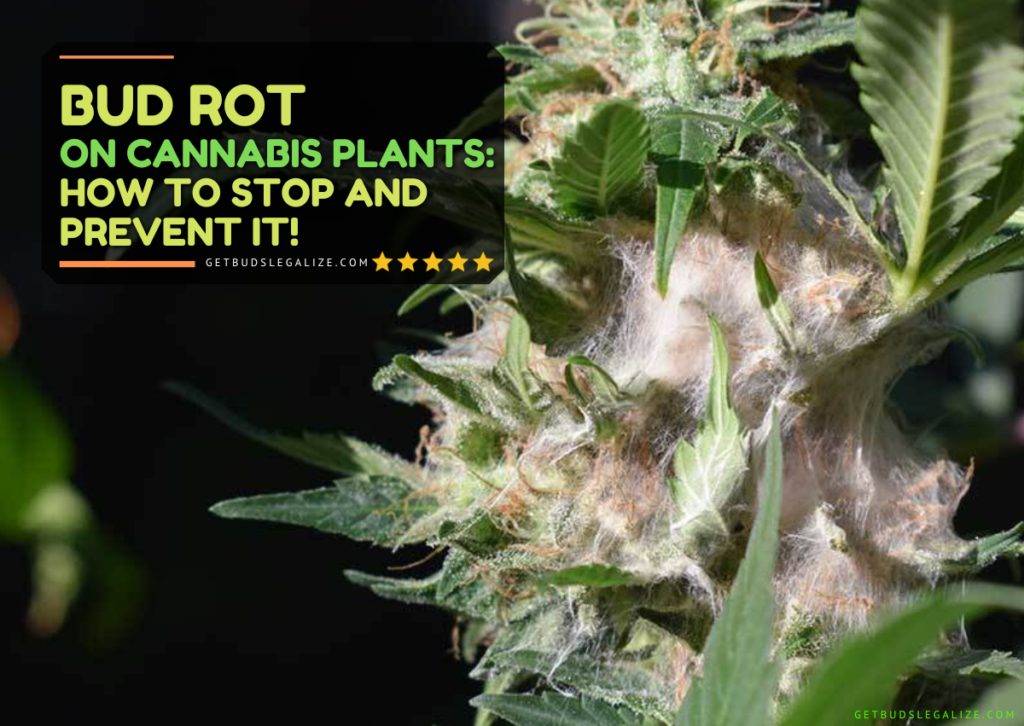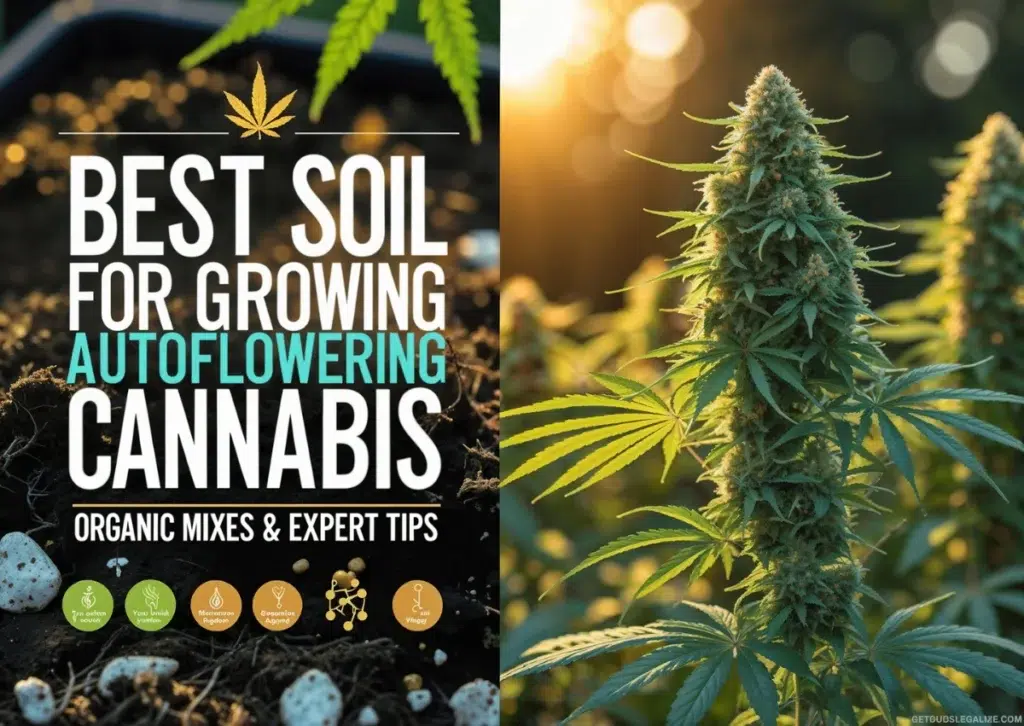Bud Rot on Cannabis Plants: How to Stop and Prevent It!
If you are a cannabis grower, you probably know the feeling of dread when you discover that your precious buds are infected with bud rot, also known as botrytis cinerea or gray mold.
Bud rot is a fungal disease that can ruin your entire harvest in a matter of days, especially in humid and moist conditions.
In this blog post, we will explain what bud rot is, how to identify it, what causes it, and how to prevent and treat it.
What Is Bud Rot in Cannabis?
Bud rot is a type of mold that grows inside dense cannabis flowers. It starts on the stem inside of the bud and spreads outward, it’s difficult to detect in its early stages, and it typically occurs on plants in the flowering stage.
Bud rot breaks down the surrounding bud tissue and then produces spores that spread to other areas of the plant or grow space. When a bud starts to mold, it is no longer safe and should be thrown away.
What Causes Cannabis Bud Rot?
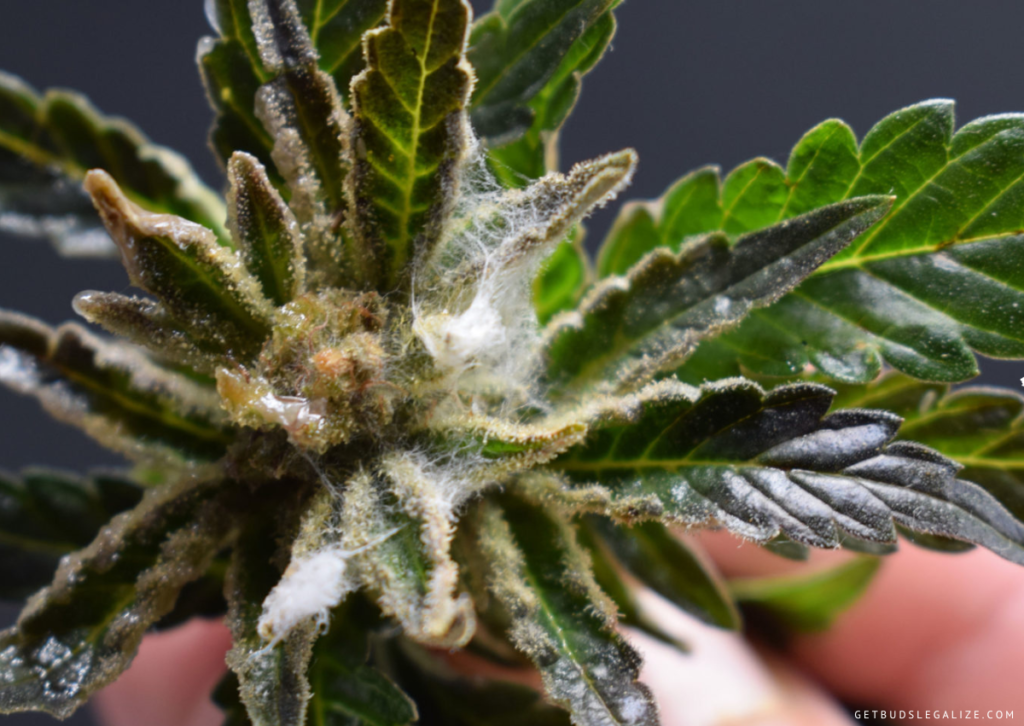
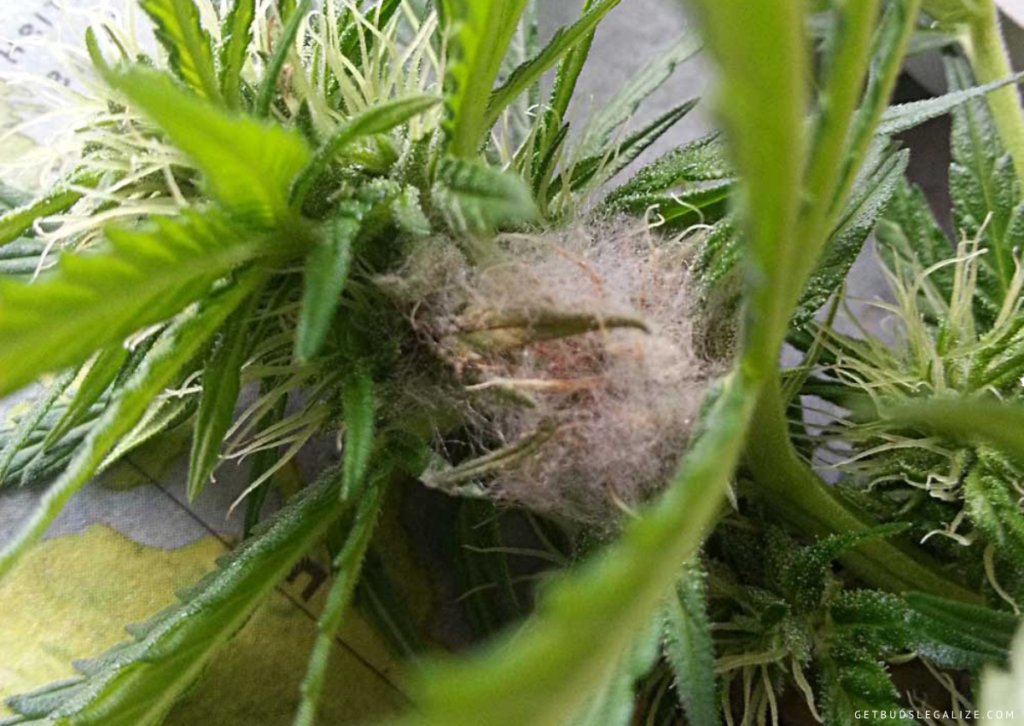
Bud rot thrives in environments that are humid, mild, and poorly ventilated. These conditions create a perfect breeding ground for the fungus to grow and spread. Some factors that can increase the risk of this occurring are:
- High-humidity: Humidity levels above 50% can create moisture on the buds, attracting mold spores.
- Mild temperatures: Temperatures between 60-80°F are ideal for bud rot to develop. Higher or lower temperatures can slow down or stop the fungus growth.
- Poor ventilation: Lack of air circulation can trap moisture and heat around the buds, creating a humid microclimate that favors mold.
- Dense foliage: Too many leaves or branches can block light and air from reaching the buds, making them more prone to mold.
- Dense buds: Buds that are large, compact, and resinous can retain more moisture and provide more food for the fungus.
- Weak immune systems in plants: Plants that are stressed, diseased, or nutrient-deficient can have lower resistance to mold infections.
How Do I Know If My Buds Have Bud Rot?
Some of the symptoms of bud rot include:
- Mushy grayish coloration of stems
- Yellow, wilted, and burnt leaves
- Visible signs of mold
- White fluffy fungus on the buds
- Spots appearing on the leaves
- Brown, dry, or curled leaves
- Deformed or abnormal leaf growth
- Greyish-brown calyces
- Darker or purple coloration of the leaves
- Small black spots
- Rotten brown buds
If you notice any of these signs, you should act quickly to stop it from spreading and prevent further damage.
How to Stop Bud Rot In Cannabis
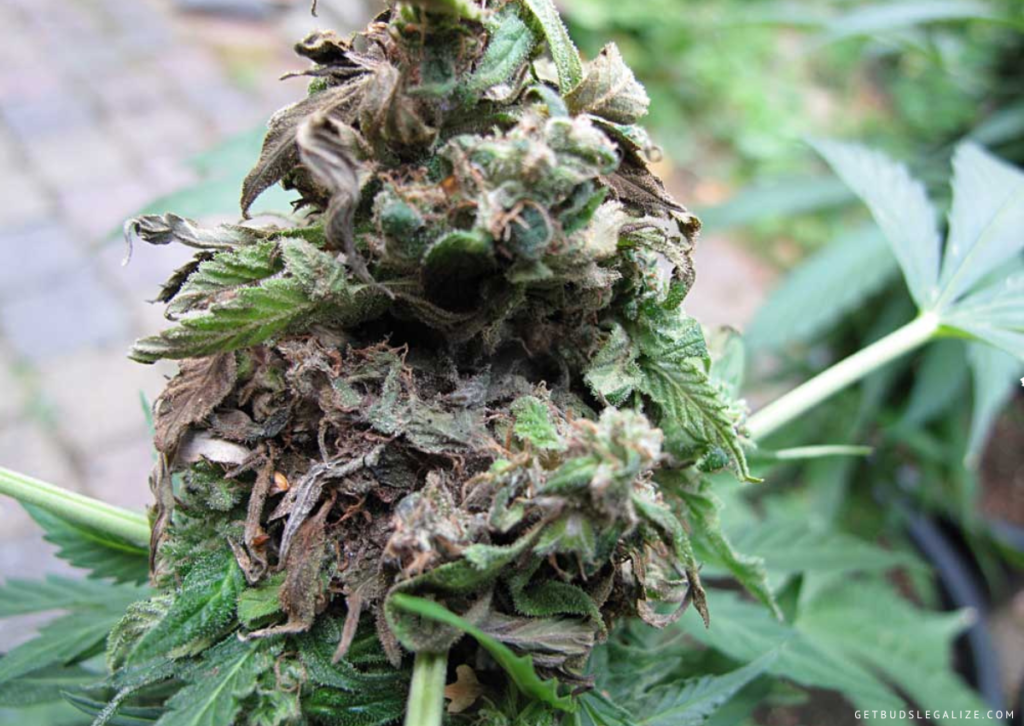
How to Stop Bud Rot Outdoors?
If you already have bud rot on your plants, don’t panic. You can still salvage some of your crop by using Trifecta Crop Control, a natural and effective solution for mold and mildew. It is a ready-to-use spray that contains essential oils, food-grade soap, vinegar, and water. It works by using nanotechnology to penetrate the cell walls of the fungus and disrupt its metabolism, causing it to die.
Trifecta Crop Control is safe for humans, animals, and plants. It does not leave any harmful residues or affect the taste or potency of your buds. It also repels pests and boosts plant health.
To use Trifecta Crop Control for your outdoor plants, follow these steps:
- Remove any infected buds: Cut off any buds that show signs of bud rot and dispose of them in a sealed bag away from your other plants. Do not compost them or use them for anything else.
- Spray Trifecta Crop Control: Dilute Trifecta Crop Control at a ratio of 2 oz per gallon of water and spray it on your plants every 72 hours until the infection is under control. Make sure to cover all parts of the plant, especially the buds.
- Switch to a preventative dose: Once you see improvement in your plants, you can switch to a lower dose of Trifecta Crop Control at 1 oz per gallon of water and spray it once per week as a preventative measure.
- Monitor your plants: Keep an eye on your plants for any signs of recurrence or new infections. If you notice any mold or mildew on your plants, repeat steps 2 and 3 until they are gone.
Trifecta Crop Control is your go-to solution for mold and mildew outdoors. It is easy to use, effective, and natural.
How to Stop Bud Rot Indoors?
You can spray your plants with Trifecta Crop Control diluted at 2oz per gallon of water, every three days until the infection is gone. Then, you can switch to a preventive dose of 1oz per gallon of water, once a week. Trifecta Crop Control works by breaking down the cell walls of mold and mildew, making it easy to wash off.
Another important factor to control is the moisture level in your growing space. Excess water can create a favorable environment for mold spores to germinate and grow. To avoid this, you should follow a strict watering schedule and avoid overwatering your plants. You should also monitor the temperature and humidity in your growing space, and keep them within the optimal range for cannabis.
The ideal temperature for cannabis plants is between 65 and 85 degrees Fahrenheit, with a slight drop at night. The temperature is especially crucial during the flowering stage when the buds are more susceptible to rot. Mold can also grow if the temperature is too high or too low, as both extremes can cause condensation and moisture buildup. If the humidity is high, the risk of mold increases for every degree above the recommended temperature.
During the flowering stage, we suggest keeping the temperature around 75 to 77 degrees Fahrenheit, and the humidity around 40 to 50 percent. You should also ensure good air circulation in your grow room, by using fans, vents, or exhaust systems. This will help prevent stagnant air and moisture pockets around your plants. You should also space your plants adequately, to avoid crowding and overlapping.
If you notice any signs of bud rot on your plants, you should act quickly and remove the affected parts. You should also isolate the infected plants from the rest of your crop, to prevent cross-contamination. You can place them in a cool, dry area with good ventilation, and hope for the best.
How to Prevent Mold and Bud Rot
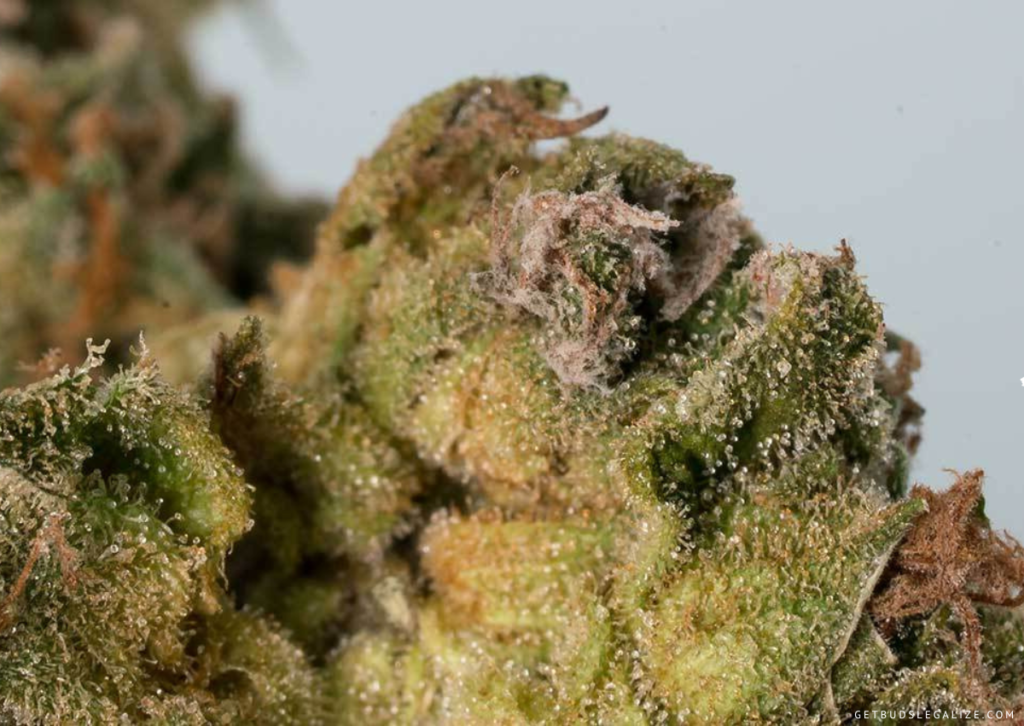
The most effective way to prevent mold and bud rot in your grow room is by addressing the following issues:
- Overwatering leads to excess moisture
- The temperature is too cool
- High humidity
- The temperature is too warm
- Plants are placed too closely together
How to Prevent Bud Rot In Outdoor Cannabis Growth?
To prevent it, you need to keep your plants healthy and dry. Here are some steps you can take to avoid it:
- Use Trifecta Crop Control Super Concentrate to spray your plants every week. Follow the instructions on the label and spray the entire plant, including the stems and buds.
- Use a leaf blower to remove excess moisture from your plants every morning and after heavy rain. Wet buds are more prone to rot, so you want to keep them as dry as possible. A leaf blower can also help improve air circulation around your plants.
- Trellis your plants to support their branches and create more space between the buds. This will prevent them from touching each other and trapping moisture. Trellising also helps expose more of the plant to sunlight, which can boost its immune system and resin production.
- Inspect your plants daily for any signs of bud rot. If you find any buds that are infected, remove them immediately and dispose of them properly. Do not touch or smoke any rotten buds, as they can be harmful to your health.
- Space your plants correctly to allow enough room for airflow and light penetration. Avoid overcrowding your plants, as this can create a humid and dark environment that favors bud rot. Ideally, you should have at least 3 feet of space between each plant.
- Remove any unnecessary plant material and standing water from your growing area. Dead leaves, branches, or weeds can harbor moisture and pathogens that can infect your plants. Standing water can also attract pests and create a breeding ground for mold. Keep your growing area clean and tidy.
How to Prevent Bud Rot In Indoors Cannabis Growth?
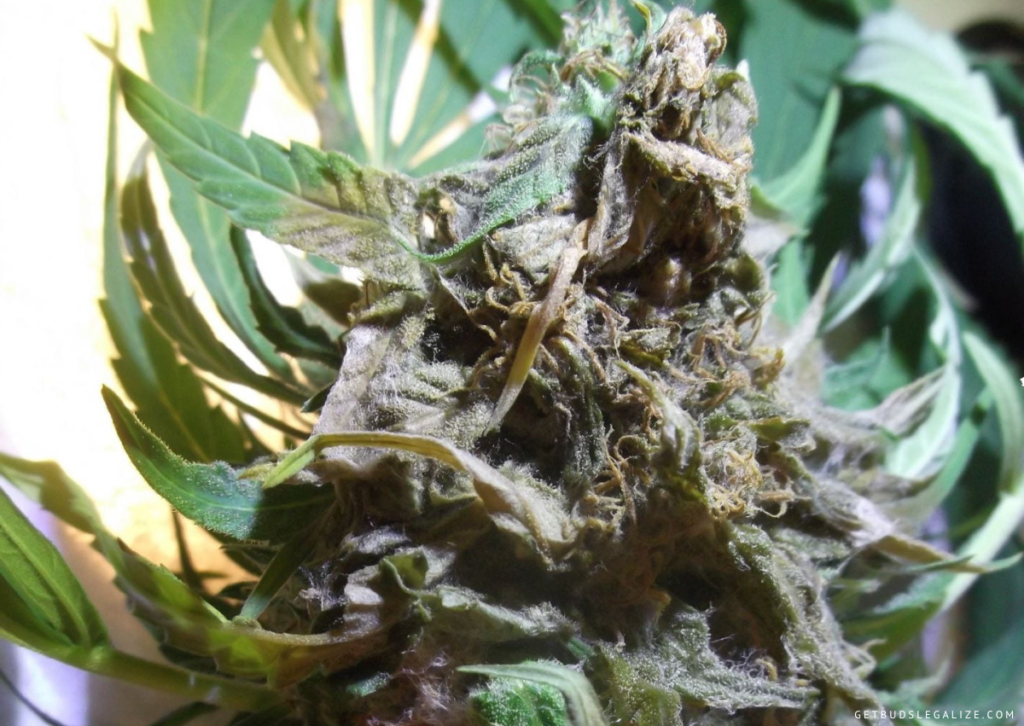
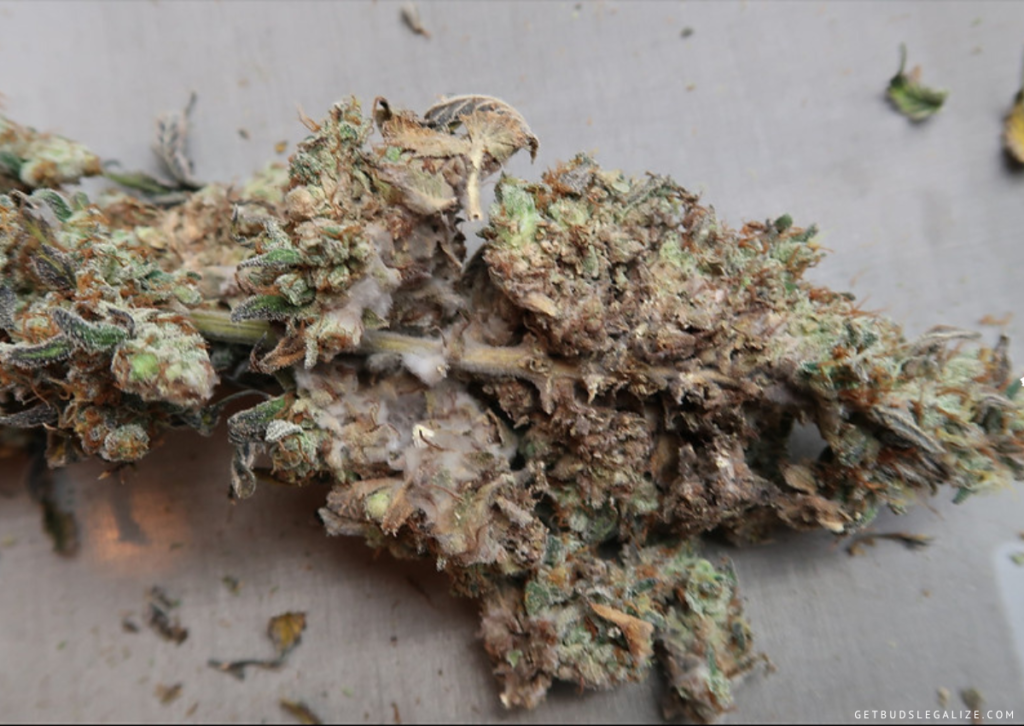
Here are some tips on how to prevent it indoors:
- Spray your plants with Trifecta Crop Control. Use 1 ounce of Trifecta Crop Control per gallon of water and apply it once a week.
- Control the humidity levels in your grow room by using an air conditioner and a dehumidifier. The ideal relative humidity (RH) for cannabis plants is between 40% and 50%. Higher humidity can create a favorable environment for mold growth.
- Improve the air circulation in your grow room by using an exhaust fan and an air intake fan. This will help remove stale air and bring fresh air into the room. You can also use oscillating fans to create a gentle breeze around your plants.
- Shake your plants gently after watering them to remove any excess moisture from the buds and leaves. This will prevent water droplets from accumulating and creating a breeding ground for mold spores.
- Prune your plants regularly to remove any dead, damaged, or diseased leaves and branches. This will improve the airflow and light penetration in your canopy and reduce the chances of mold infection. You should also remove any lower and middle leaves that are not receiving enough light or are touching the soil.
- Inspect your plants every day for any signs of bud rot, such as brown, gray, or black spots on the buds, a musty smell, or a cotton-like fuzz on the affected areas. If you find any infected buds, it’s important to cut them off immediately and dispose of them safely.
How to Prevent Mold and Bud Rot in The Cannabis Drying Room?
To prevent mold and bud rot in the cannabis drying room, you should follow these steps:
- Find a room that is dark, dry, cool, and has good air circulation. Light, moisture, heat, and stagnant air can promote mold growth and degrade the quality of your buds.
- Cut your plants into branches and hang them upside down on a wire rack or string. Make sure there is enough space between the buds for air to flow around them.
- Use a device such as a dehumidifier, fan, or air conditioner to regulate the humidity and temperature in the room. Ideally, you want to keep the humidity between 45% and 55% and the temperature between 18°C and 21°C.
- Inspect your buds every day for any signs of mold or bud rot, such as white fuzz, brown spots, or a musty smell. If you see any infected buds, remove them immediately and dispose of them safely.
- Dry your buds until they are crisp and snap when you bend them. This usually takes about a week or two, depending on the size and density of your buds.
Stopping and Preventing Bud Rot Is The Key to Successful Growing
Bud rot is a frustrating and devastating problem for cannabis growers, but it can be avoided and controlled with proper care and attention. By following the tips and advice in this blog post, you can ensure a healthy and bountiful harvest of high-quality cannabis buds.
Thank you for reading and Happy Growing!
FAQs
No, you should never. Smoking moldy cannabis can expose the user to harmful microorganisms, such as Aspergillus, which can cause chronic pulmonary aspergillosis, a rare but serious condition that damages the lungs. This condition can be fatal for people with weakened immune systems or cancer.
Therefore, smoking them should be avoided at all costs. Moldy cannabis should be discarded immediately and not consumed in any form. Smoking bud rot is a risky and dangerous practice that can have severe and lasting effects on the health of the user.
No, infected buds cannot be cured, since the fungus has already damaged the plant tissue irreparably. Curing will not remove mold spores or toxins from your buds and may actually make them worse.
You should dispose of infected buds safely and responsibly. Don’t throw them in the garbage or compost bin, as they can contaminate other organic matter or spread mold spores. Instead, seal them in a plastic bag or container and dispose of them in a hazardous waste facility or incinerator.
Hydrogen peroxide is not a miracle cure and it has some drawbacks and limitations. Here are some things to consider before using hydrogen peroxide for your plants:
1. Hydrogen peroxide works by releasing oxygen that kills the fungal spores and bacteria that cause plant diseases. However, it also kills the beneficial microorganisms in the soil that help your plants absorb nutrients and fight off pathogens. Therefore, you should only use hydrogen peroxide as a last resort and not as a preventive measure.
2. Hydrogen peroxide can also damage the plant tissues if used in high concentrations or applied too frequently. It can cause leaf burn, discoloration, wilting, and stunted growth. You should always dilute hydrogen peroxide with water before spraying it on your plants. The recommended ratio is 1 part hydrogen peroxide to 10 parts water.
3. Hydrogen peroxide can help stop the bud rot spread, but it cannot reverse the damage already done. Bud rot is a serious fungal infection that affects the buds of weed plants, especially in humid and rainy conditions. It causes the buds to turn brown, mushy, and moldy, and it can ruin your entire harvest. If you notice any signs of it on your plants, you should remove the affected buds immediately and dispose of them safely. Do not smoke or consume any buds infected, as they can contain harmful toxins and bacteria.
4. Hydrogen peroxide can also help prevent or treat powdery mildew, which is another common fungal disease that affects weed plants. It can reduce the yield and quality of your cannabis plants, and it can spread quickly if left untreated. To use hydrogen peroxide for this disease, you need to spray the affected areas with a diluted solution once a week until the symptoms disappear.
Mold-resistant strains are varieties that can withstand high humidity and moisture levels without developing fungal infections. Some of the best mold-resistant strains are:
- Durban Poison: A pure sativa strain from South Africa that thrives in hot and humid climates. It has a spicy and earthy aroma and a stimulating effect.
- Super Silver Haze: A hybrid of Skunk, Northern Lights, and Haze that produces large and resinous buds. It has a citrus and pine flavor and a euphoric and energetic high.
- Blue Dream: A cross between Blueberry and Haze that grows well in mild and humid environments. It has a sweet and fruity aroma and a balanced effect of relaxation and creativity.
- see more…
The recovery time for your plant depends on several factors, such as the severity of the infection, the environmental conditions, and the treatment method.
Usually, it takes several days to several weeks for a plant to recover. However, if the infection is too advanced, it may not be possible to save the plant.
ILGM Fertilizer

- From seedling to harvest, give your plants everything they need.
- Enough for feeding at least 5 plants.
- Discounted Package Deal
- Works well in soil, hydroponics, and other growing mediums.
- The best way to treat your plants
ILGM Plant Protector

- Protect your cannabis from diseases and harmful pests.
- Contains three 20 ml bottles.
- Enough supplies to protect 20 plants.
- It can be used in soil, hydroponic, and all other growing mediums.

